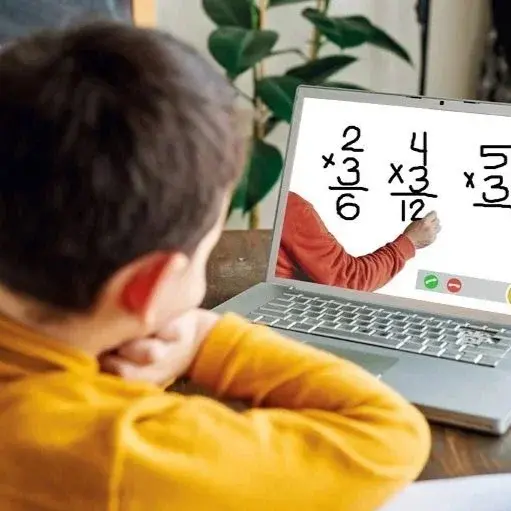Increasing math proficiency even during a pandemic
As a Title I Schoolwide Program, SpringMath has become an invaluable tool for increasing math proficiency for many students in the Juniata County School District, located in central Pennsylvania. Although the program was introduced just two years ago, it’s being implemented in kindergarten through 5th grade.
Data provided through SpringMath enables teachers to know for certain when students have mastered the math skills for their grade level. If students haven’t yet mastered skills, SpringMath provides detailed steps for either classwide or individual intervention.

"Our objective is to make sure students have sound foundational skills and SpringMath is a tool that we use to help build those skills. It starts with developing the basics of math fluency in kindergarten students, strengthening those skills as they grow, and decreasing gaps over time."
Less reminding, more learning
By using SpringMath as a guide, teachers at the district are noticing that students are retaining math mastery — so instead of revisiting concepts students should have learned in prior years, educators are able to spend more time teaching grade-level concepts.
Angela Wagner, a Title I math teacher, uses SpringMath data for individual intervention, but she also encourages teachers to use it in the classroom for its unique, team approach to learning — the class sets a goal and everyone works meet it. When students reach their goals and help the class move on, it gives them the confidence and motivation to keep learning.
“Kids get so excited to actually do it. They will see me in the hallway and say, ‘Hey, Mrs. Wagner! We passed our goal, or we met our goal, or we have to do SpringMath again!’” said Wagner. “And teachers are the same way. They are celebrating successes on a regular basis. Some of their classes are getting through some tough concepts in a short amount of time, which is awesome.”

"Students retain concepts instead of slipping to the next grade without knowing certain concepts. That means that I don’t have to take an entire class period to teach or reteach a topic, because it’s something they already know or are at least familiar with."
Dealing with doubts
|
Juniata teachers didn’t embrace SpringMath immediately. At first, teachers expressed concern that they were being forced to teach “one more thing” in an already jam-packed schedule. They worried they wouldn’t have time to implement a new program. “The last thing I wanted to do was another program. I looked at everything as a negative: ‘You want me to correct more papers? I have to print things off?’” said Feltman. “But once you get comfortable with it, the benefits for the kids far surpass any additional work for the teachers. It’s one of the best tools I’ve seen so far that builds fluency of basic math concepts. The practice, the repetition, the speed — all those things make the kids better math students.” For Feltman, SpringMath took a lot of trial and error to perfect a process to be effective and efficient — from figuring out the best methods for simple tasks, such as passing out the papers or correcting problems, to familiarizing the students with a new routine. He now mentors other teachers who are learning to use SpringMath in their classrooms. “I hated it at first. It took up way too much time. When we started it took 20 minutes out of my class, every day,” he said. “But once the kids learned the routine, I modified the program to be more time-friendly for our classroom. Now we can do it in 10 to 12 minutes.” |
Early elementary teachers also expressed some skepticism that the program would work for younger students — especially getting them to pair up, teach, and learn from each other. To address these concerns, Juniata teachers connected with other local elementary schools that were already using SpringMath to see it in action. Now SpringMath is an early elementary staple in the district. “Starting SpringMath in kindergarten means our first graders are getting farther ahead,” said Mitchell. “Their skills and proficiency will just keep building over time. It’s a snowball effect.” After seeing the students grow in math proficiency and experiencing firsthand how easy SpringMath is to use alongside core curriculum, Juniata’s teachers embrace and praise the program. “Yes, there is some work on the teacher’s part, but once you put students’ scores in, the program does it all for you,” said Feltman. “It actually saves time in that way. You don’t have to guess which concepts to start with, or how to go about teaching it. You don’t have to look up anything, you don’t have to check any charts. It’s so easy to use when it comes to entering data and looking at data.” |
Overcoming every obstacle
Despite experiencing pandemic-related obstacles, teachers have been working together to find ways to make SpringMath work in the era of remote and socially distanced learning.
“We’ve seen lots of collaboration on implementation,” said Mitchell. “Teachers are asking, ‘How are you doing it? How are you making it work?’ SpringMath relies on students using pencils and paper and working together, which made virtual learning more of a challenge — but not impossible.”
SpringMath’s flexibility has given teachers the opportunity to modify the program to best fit their classrooms — even the virtual ones. For example, Wagner uses SpringMath resources for the students she would normally meet with. She regularly reviews students who haven’t met mastery yet, and gives those kids work to build fluency, but isn’t using the timing aspect.

“Speed is important, but we can work on that later. It’s more important to continue to build on those basic skills and keep kids from falling behind and avoid gaps during a suspension of in-person learning.”
Making it work virtually
The COVID-19 pandemic brought some additional challenges not only for educators at Juniata, but for teaching in general. Usage of SpringMath was paused during the initial school closure in the spring of 2020, as teachers needed time to learn how to adapt their core curriculum to online learning in living-rooms-turned-classrooms.
Though it looked a little different, the 2021-2022 school year included SpringMath in both in-person and online learning models.
“Moving to distance learning has made it more challenging, but it’s also been challenging in the classroom” said Feltman. “Every year we tell kids to partner up and work together, and that gets really tricky when we have to tell them they have to stay six feet apart.”
Heading toward a bright future
Year-over-year improvement in proficiency is difficult to measure because the program is so new at Juniata, and 2019-2020 data is not available for some schools (due to the pandemic closures).
However, despite not having proficiency data, Mitchell said, “Spring Math has helped us identify the gaps at grade level, and we’re continuing to work toward finding ways to get more remediation for those who need extra help. Spring Math is pointing us in the right direction to get there and ensure all of our students are successful in math.”
